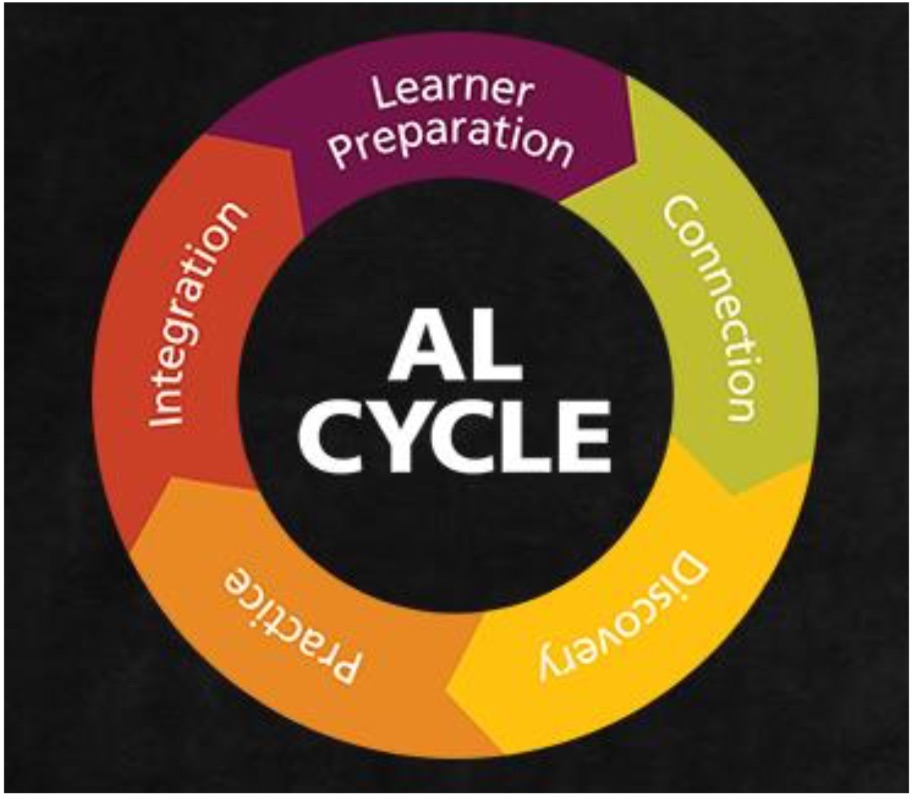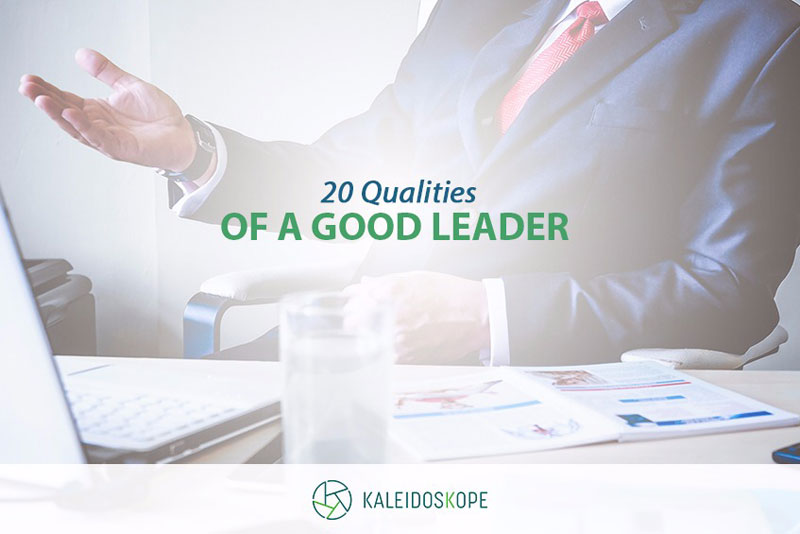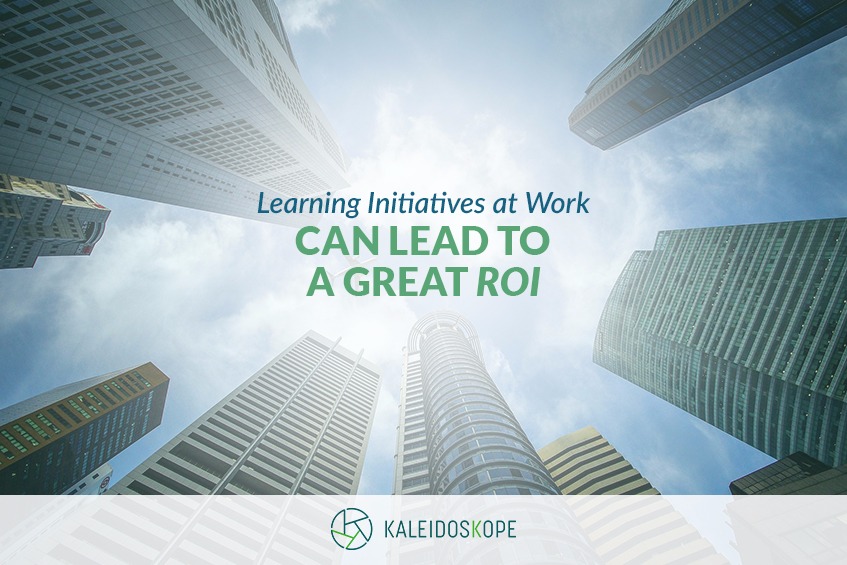Solution Focused Leadership Coaching

Coaching is a powerful way to help employees unlock their potential. And this necessitates a high-impact leadership training, particularly in Singapore’s fast-developing business landscape.
Most coaching methods focus on solving a “problem”, rather than building the solution. It’s an easier approach. If you hit the Search button for “Employee Coaching” online, the first few options that pop up promise you to teach you “how to fix performance problems”.
But here at Kaleidoscope, we take a different route.
Instead of looking at weaknesses, or “performance problems”, our Solution Focused approach looks to the future, the coachee’s strengths, and their goals. By empowering you to look at your own capabilities instead of where you’re currently stuck, we build a map of actionable and sustainable solutions.
How is Solution Focused coaching different from other approaches?
A trained Solution Focused coach uses a strength-based approach to address solutions rather than problems. The spotlight is shifted from the problem to the solution.
When we de-link the problem and the solution, identifying the root cause of the problem becomes secondary, and the conversation focuses on the solution. The coaching conversation goes on to explore “What’s Wanted” instead of “What’s Wrong”.
It can be difficult to distance the solution from the problem.
A Solution Focused coach, therefore, might ask what a coachee has done successfully in the past, perhaps in similar situations, or what does the future look like …when the problem is resolved. By focusing the conversation perhaps on a coachee’s past successes, or a positive future, a Solution Focused coach surfaces the coachee’s resources and abilities, empowering the coachee, and helping him understand that they are already on the way to finding solutions.
The dialogue is focused on helping the coachee form a clear picture of their preferred future, instead examining their problems under a microscope.
The coachee’s insights are built as a result of the dialogue that takes place during coaching, which is why we say that a Solution Focused approach is about building solutions.
Let’s see a recent, real-life demonstration of this …
Mr. Tan, a senior director at a public sector organization, recently found out that his team was very unhappy with his level of engagement through the results of a 360-interview.
As the interviews were in written form, there was no platform for Mr Tan to defend, or oppose to these criticisms. During the coaching session, Mr. Tan started getting defensive in explaining why his employees were unhappy with his performance. “The millennials in my team are really problematic … these guys take things for granted, they come in late and leave on time,” he says.
I observed very clearly that a wall of defensiveness was in construction. The rapport I had built with him at the start of the conversation was crumbling. I flipped the 360-feedback booklet over and took the conversation in a new direction. “Mr Tan, you’ve been with the organization for a long time. There must be something you enjoy doing here to have stayed for 32 years. Are you still happy here?”
There was silence. Mr Tan looked at me, a little stunned, then his eyes slowly looked away and gazed out of the window. I waited. After a while, he finally spoke, sounding resigned.
“You are right. I’m not happy.”
“Yet you have chosen to stay for 30 years. Let’s suppose you are happier somewhere else, what would you be doing differently?”
“I’d be retired, spending more time at home. But my wife … she doesn’t like me to be at home. She only likes my supplementary credit card.” It was clearly a very sensitive topic and a tender moment. Mr. Tan was nearly in tears.
“How would you like your relationship with your wife to be like instead?” I watched him visibly perked up as he excitedly started talking about the “good-old days”.
As we progressed in the conversation, he became slowly aware that his relationships with people, including his wife, were very transactional. The clearer he was about where he wanted to be in the future, the more driven he was to improve his relationships with people now.
The first step in his journey was thinking about how he could show more affection for his wife (isn’t it always? …happy wife, happy life), closely followed by how to bridge relationships with his younger team members.
This is what we meant by de-emphasizing problem solving.
Through asking questions, and guiding the conversation to raise his awareness rather than be fixated on fixing the problems, Mr. Tan was given space away from the overwhelming negativity of his problems, and brought to a place where he could generate his own solutions.
Paradoxically, by focusing less on problems, we expand the possibilities and create more sustainable solutions.
Who Should Learn Solution Focused Coaching?
Anyone can benefit from Solution Focused coaching, no matter where you may be in your career, or which rung you are on the corporate ladder.
This coaching approach helps coachees realize their full potential, and employees break through self-imposed limits. Solution Focused coaching is an ideal approach in today’s fast-paced world. The concept is simple and straightforward.
Most importantly, Solution Focused coaching creates a hopeful and positive environment that empowers instead of overwhelms.
If you’d like to train solution-focused coaches in the house at your organisation, send your enquiry to us at Kaleidoskope, today.
Leadership Training
- Business Storytelling – A Critical Skill For Great Leadership
- Want to make history as a leader? Try studying these great leaders from history
- Solution Focused Leadership Coaching
- Leading the Way for Leaders: How Your Leadership Can Continue to Evolve
- How to Manage a High-Performance Team Made Up of Different Personalities
- Have You Mastered the 4 Leadership Fundamentals?
- Do You Practise Adaptive Leadership? Your Organisation Needs You To
- Why A Good Leader Needs To Understand Business Agility
- 20 Qualities of a Good Leader in Times of Change (A Checklist)
Corporate Training
- Why is your training, boring?
- Learning Initiatives at Work CAN Lead to A Great ROI. Here’s How
- Corporate Training Doesn’t Seem to Be Working? You Need an HPLJ Approach!
Facilitation Training
- Facilitate a High Impact Training Course with Accelerated Learning
- Accelerative Learning – A Better Return on Training Investment (Part 1)
- Accelerative Learning – A Better Return on Training Investment (Part 2)
- Accelerative Learning – A Better Return on Training Investment (Part 3)
Virtual Learning
Start Your High-Performance Learning Journey
WITH KALEIDOSKOPE NOW!
Being a good leader isn’t something you can memorise, or take lessons for then consider yourself an expert, afterwards. While skills and certain principles may be taught, it’s up to you to make a conscious effort to put them into action.
Leading the Way for Leaders: How Your Leadership Can Continue to Evolve

John F Kennedy once wrote that “Leadership and learning are indispensable to each other.” As the leader of an entire nation counting on him to steer them through delicate foreign relations, economic difficulties, racial discrimination and other domestic issues, this US President knew he couldn’t afford to let his leadership skills slide.
Being a good leader isn’t something you can memorise, or take lessons for then consider yourself an expert, afterwards. While skills and certain principles may be taught, it’s up to you to make a conscious effort to put them into action.
There’s no real substitute for the experience you gain in the field as you pay close and careful attention to the impact of your actions on those you lead. This doesn’t mean, however, that the skills that a good leader ought to have can’t be learned or imparted in the form of guidance or mentorship.
A Guide Designed for Those Who Guide
To help you and the leaders in your organisation evolve your leadership abilities, we’ve put together this compact reference as a guide that acts in much the same way as a lighthouse for ships on a turbulent sea. It can be easy to lose sight of your role’s meaning or purpose amid the frenetic activity of your day-to-day, and the uncertainties of today’s business environment.
With entire teams of people and their respective leaders clamouring for your attention and multiple responsibilities demanding to be fulfilled, it can be helpful to take a step back and remember
- What it means to be a leader
- What are the critical traits a leader needs to have
- What a leader needs to do to address internal issues within the organisation
- How can a leader rise to the occasion to meet external challenges
This “quick refresher course”, if you will, just might help you keep your leadership goals in sight and within reach, and keep you on the path toward achieving them.
What It Means To Be A Leader
There are many definitions of who a leader is and what he’s meant to be doing, but they all might be distilled into this basic concept: A leader is a leader not because of the title he has, but the role he has to fulfil—and that role is to serve those he leads, and not himself. This means putting the needs of the organisation first, and making sacrifices toward this end.
Being a leader means being responsible for everyone in your charge, and constantly thinking of the greater good, which sometimes means overriding the individual. The larger the organisation or the more people you have under your care, the greater your responsibility.
This is one of, if not the guiding principle in making the tough decisions which, as a leader, are your job to make on a daily basis. When things get complicated, fast, ask yourself how a course of action in one way or the other affects everyone involved—from key management all the way down to maintenance. Everyone, not just a chosen few, must be able to benefit.
What Are the Critical Traits A Leader Needs to Have
It’s interesting to note how a list of characteristics that people expect their leaders to have, might often be seen on similar lists pertaining to heroes, idols, or anyone people look up to. But while we offer you a checklist of 20 Qualities of a Good Leader in Times of Change, we also point out that these qualities generally aren’t acquired overnight, nor on your own.
When we say “on your own”, we refer not to your personal initiative or drive for self-improvement, but rather to the fact that leadership doesn’t take place in a vacuum. Qualities on our checklist such as vulnerability and generosity, for instance, particularly require interaction with others to develop.
After going through this checklist and ticking off such qualities as you consider yourself to possess to an acceptable degree, it might be helpful to look back at the list later on to see whether you’ve improved. You might even make one or more of these qualities the object of a sort of “new year’s resolution” for you to work on.
What a leader needs to do to address internal issues
In every organisation in every vertical across industries, teams are made up of people, and no two people are ever alike. As diversity in terms of background, skills and specialisations continues to abound in the workplace, it falls to you, as a leader, to make sure everyone is able to work together as smoothly as possible.
We offer you some advice for How to Manage A High-Performance Team Made Up of Different Personalities, reiterating the need for empathy and the ability to reach out and connect with people. While office cultures vary between organisations, the need for mutual respect, tolerance and trust between co-workers is a must at any level.
If a breach in this trust should occur or a line should be crossed, which does happen sometimes even in (or sometimes especially in) the closest-knit teams within “family atmosphere”-type cultures, it falls to you to restore harmony. You might refer to your organisational values and ask yourself, again, what the best course of action would be as regards the greater good.
How Can a Leader Rise to Meet External Challenges
- Political issues
- Economic trends
- Technological developments
- Natural disasters
- Social questions
These are just some of the myriad factors affecting business growth, and as a leader, it’s your duty to see that your organisation is able to react in a timely fashion and to adapt accordingly.
Providing a prompt and effective response to challenges as they happen is the function of business agility. An organisation encumbered by a rigid hierarchy or bureaucratic procedure, for instance, would find itself quite unable to move quickly should an opportunity (or an impending disaster) present itself. Review the reasons Why A Good Leader Needs to Understand Business Agility.
It’s not enough for an organisation, however, merely to react—especially in the midst of the likes of a downward trend or negative backlash to an unforeseen event. An organisation must be able to adjust or change its team structures and business processes, for instance, and it’s up to you as a leader to effect these changes as needed.
This entails keeping an open mind and a willingness to learn, and while it’s undeniably admirable to adhere unflinchingly to a set of values and a work ethic, clinging to outdated procedures or methodologies will do your organisation no good. Ask yourself, Do You Practise Adaptive Leadership? to find out whether you’re the kind of leader your organisation needs.
Learn From Other Leaders
Being able to adapt, or to evolve as a leader comes with the territory of business growth. As with growth in general, not changing into something better is precursory to death—or stagnancy, at best. You owe it to the people you lead to keep on learning to become a good leader. It’s your responsibility to them as well as to yourself.
The good news is that you’re not alone—nor should you be. At the heart of your evolution as a leader is the ability to listen and empathise with the needs of those around you, within and outside of your organisation. Learning opportunities are just waiting to be found within every interaction; all you have to do is to seize them as they come.
Find guidance and mentorship specially designed for leaders and leaders-in-the-making with trainers who know what it is to be leaders, themselves. On top of decades of experience in leadership and management training, executive coaching, and business agility, our trainers have held key management positions in leading multinationals across the region and beyond.
Leadership Training
- Business Storytelling – A Critical Skill For Great Leadership
- Want to make history as a leader? Try studying these great leaders from history
- Solution Focused Leadership Coaching
- Leading the Way for Leaders: How Your Leadership Can Continue to Evolve
- How to Manage a High-Performance Team Made Up of Different Personalities
- Have You Mastered the 4 Leadership Fundamentals?
- Do You Practise Adaptive Leadership? Your Organisation Needs You To
- Why A Good Leader Needs To Understand Business Agility
- 20 Qualities of a Good Leader in Times of Change (A Checklist)
Corporate Training
- Why is your training, boring?
- Learning Initiatives at Work CAN Lead to A Great ROI. Here’s How
- Corporate Training Doesn’t Seem to Be Working? You Need an HPLJ Approach!
Facilitation Training
- Facilitate a High Impact Training Course with Accelerated Learning
- Accelerative Learning – A Better Return on Training Investment (Part 1)
- Accelerative Learning – A Better Return on Training Investment (Part 2)
- Accelerative Learning – A Better Return on Training Investment (Part 3)
Virtual Learning
Start Your High-Performance Learning Journey
WITH KALEIDOSKOPE NOW!
Find out what makes training boring and factors affecting training impact and efficiency. Click the link the link to know more.
Impact and Efficiency: Why is Your Training, Boring?

Let’s face it: the battle for people’s attention is an uphill one. It can be tough to get an audience to listen, let alone learn. No matter how hard you try, sometimes, it just seems impossible to get trainees to not just truly learn something, but to be eager to put what they’ve learned into practice.
To find out what makes training
Get the most out of training events with David Turberfield.
Look out for these liabilities that can suck the life out of your training.
The number of countless, seemingly endless training sessions conducted across industries makes it relatively easy to determine exactly what contributes to their boring-ness.
Some of the most common denominators boring training events
- Reading from slides. Simply reading text on a slide instead of explaining it tends to cause your audience to stop listening and their minds to shut down. After all, they can just as easily read it for themselves (and more often than not, much faster than you can read it aloud).
- Too much text on slides. Unsurprisingly, text-heavy visuals are heavy on the eyes, which is no help at all in keeping your listeners awake, especially if your presentation happens to be scheduled in the afternoon.
- Spending too much time preparing slides, and not enough time getting ready for the actual presentation or training activity, itself. Many trainers make the mistake of equating slide preparation with preparation for the act of presenting.
- Forgetting about the trainees.
Still other trainers get so caught up in preparing what the trainees need to know, that they overlook the need to put themselves in the trainees’ shoes. As a result, they forget to ask questions such as, “Would the audience find this interesting?”
- Speaking longer than 10 minutes. Studies suggest that people being presented to (as is usually the case during training events) really only pay attention for about 10 minutes, after which their concentration and engagement tend to wane.
It’s no accident that the first three factors involve the use of slides; indeed, some industry experts recommend doing away with slides altogether during training. Still other experts lay the blame not on the slides themselves but on the way the slides are used, that is to say, using them as cue cards instead of aide-
But pretty much anyone who’s ever written about the pitfalls of keeping training and presentations engaging agrees that the audience’s attention span is the most important factor for consideration—arguably making No. 5 the most probable cause of boring training sessions.
Get the most out of training events with David Turberfield.
Leverage these learning hacks to breathe new life into your training.
Now that we’ve identified the causes, we can now look for the cures. If the way you use slides during training is the problem, better preparation is the solution—which means knowing what you’re teaching inside and out so as not to need slides.
If you must have the information you wish to impart on hand, keep them in a few, succinct bullet points in the space for notes on each slide, instead of on the slide itself. This way, they won’t be visible to your trainees.
Feel iffy about going in without slides? Try using the slides more for visual aids rather than text. Slides are ideal for showing tables, graphs
But as the challenge of your listeners’ “10-minute limit” is paramount, here are some particular tips to help you overcome it:
- Connect with your audience. If eye contact isn’t your thing, try looking just above their heads to give the impression that you are looking at them. If audience size permits, call people by name or choose people to participate in demonstrations. Try using open questions to create discussion and have your attendees speaking, being heard and listening to each other.
- Learning by design. Design your material to be less
slide based and more conversational. Convert the material into scenarios that can be used forgroup based discussion and feedback, have the participants doing the work. Have them feedback in innovative in fun ways thatgets them thinking and their colleagues really paying attention.
- Once upon a time… Storytelling has always been an effective and engaging way to hold people’s attention and impart information. Use stories to illustrate or demonstrate a point, whether they’re taken from real life or just made up.
- Break it up to wake them up. Once your presentation hits the 10-minute mark, let your audience take a break. This doesn’t have to be a literal bathroom or coffee break; it could also mean a video after 10 minutes of slides, for instance, an exercise, discussion or quick Q&A session.
- Not more than four. Studies also suggest that people can only process and remember four new pieces of information at a time, so there’s really no point in cramming in so much info in one go. Try to plan the training event in such a way that only four or
less lessons are taught at a time.
- Ditch the script. While the essential preparation and rehearsal for a training session may involve some
memorisation , it helps immensely to not make it sound like you memorized a script. To this end, ad-libbing helps make things sound a lot more natural and more likely to hold your audience’s interest.
The tips are just a tiny sample of what you can do you to make sure everyone at your
Get the most out of training events with David Turberfield.
ICF Associate Certified Coach and NVW Certified Integral Coach, David Turberfield has 25 years of experience showing trainers and facilitators how to hold an audience’s interest, and to make sure they actually learn.
As an approved Accelerative Learning Facilitator who has led High Impact Facilitation Train the Trainer courses, David has conducted workshops such as
- Shell China Exploration & Production Company (
SCEPCO ) Safety Summit, Chengdu, China - Bayer Annual HSE Workshop, HCMC, Vietnam
- Samsung C&T CEO Forum, Seoul, Korea
- 3M Annual APAC EHS Leadership Workshop, Singapore
- AES APAC Leadership Workshop, Masinloc, Philippines
- GDF Thailand Leadership Workshop, Chonburi, Thailand
- Micron APAC Leadership workshop, Taichung, Taiwan
David is the lead facilitator for the Accelerated Learning (AL) course at
Leadership Training
- Business Storytelling – A Critical Skill For Great Leadership
- Want to make history as a leader? Try studying these great leaders from history
- Solution Focused Leadership Coaching
- Leading the Way for Leaders: How Your Leadership Can Continue to Evolve
- How to Manage a High-Performance Team Made Up of Different Personalities
- Have You Mastered the 4 Leadership Fundamentals?
- Do You Practise Adaptive Leadership? Your Organisation Needs You To
- Why A Good Leader Needs To Understand Business Agility
- 20 Qualities of a Good Leader in Times of Change (A Checklist)
Corporate Training
- Why is your training, boring?
- Learning Initiatives at Work CAN Lead to A Great ROI. Here’s How
- Corporate Training Doesn’t Seem to Be Working? You Need an HPLJ Approach!
Facilitation Training
- Facilitate a High Impact Training Course with Accelerated Learning
- Accelerative Learning – A Better Return on Training Investment (Part 1)
- Accelerative Learning – A Better Return on Training Investment (Part 2)
- Accelerative Learning – A Better Return on Training Investment (Part 3)
Virtual Learning
Start Your High-Performance Learning Journey
WITH KALEIDOSKOPE NOW!
Let’s take a look at what accelarated learning is, how it works, and how it can make a huge difference in your own facilitation training course. Learn more.
Facilitate a High Impact Training Course with Accelerated Learning

In Singapore, corporate leadership development is a necessity, but how engaged is your organisation with its learning journey, really? If you know what it’s like to sit through a training session wondering when in blazes it was going to end, read on.
Whether you’ve had to attend because your boss said so, or even if you had to be the one to do the actual training, regular, run-of-the-mill training can be a chore. Yes, even for the very people who have to get up there in front of a roomful of people, hoping against hope that their audience doesn’t fall asleep and actually learns something, this perception of training can be very real.
The good news is that “training as a chore syndrome” for both trainer and trainee can also be overcome. And that’s where Accelerated Learning or AL steps in.
Now, don’t get carried away by the “accelerated”, as this type of learning isn’t only about picking things up faster. AL in corporate learning initiatives is focused on high impact training where training session participants are excited by the learning process, and can’t wait to get out there and apply what they’ve learned.
Let’s take a look at what AL is, how it works, and how it can make a huge difference in your own organisation’s training programmes.
The Most Advanced Learning Approach
Neurology and learning experts recognise AL as the most advanced learning approach used in organisations today. With its focus on de-mechanising and re-humanising the learning process, AL provides a holistic experience that is highly engaging, motivating and effective. AL is based on the principle that people learn better when they participate in the learning process.
The end goals of an AL-facilitated training session include
- Guiding participants to learn from their experiences and from others in their workplace
- Teaching participants to apply the skills, concept and attitudes they’ve learned
- Creating a comfortable environment to allow high-engagement learning to take place
Studies show that applying AL to training courses results in maximised learning retention and efficiency, as well as a better return on investment.
How does Accelerated Learning work?
To enhance the learning experience, AL combines fun and seriousness in ways that produce the most positive results. As an entirely results-focused approach, AL isn’t “fun for fun’s sake”, nor is it stoic or inflexible.Training methods using the AL approach adjust to the subject matter and the learners themselves at a particular organisation.
The Accelerated Learning Cycle is made up of five distinct phases:

- Learner Preparation provides logistical information to prepare for participants.
- Connection creates a safe, positive learning environment that connects participants to the learning.
- Discovery presents new material to allow learners to discover and develop new information in creative, interactive and memorable ways.
- Practice is where learners begin to use the new material in controlled and structured activities, and the facilitator passes the baton to the learners as they demonstrate increasing mastery in creative and individualised ways.
- Integration or Mastery Demonstration is where learners use interactive methods to “teach back” what they have learned.
Development psychologist and professor Howard Gardner’s Multiple Intelligences (MI) theory is an Accelerated Learning model that focuses on how information is processed and used to solve problems. It allows a facilitator to adjust to needs of individual participants based the kinds of intelligence they have or learning methods they prefer.
Similar to MI is another AL model, the Audio, Visual, Kinesthetic (AVK) Learning Modalities, which focuses on the sensory channels whereby a person receives and stores information.
It ALL Depends On the Trainer
How much impact AL has on the training event depends on the drive and skill of the trainer. An AL facilitator needs to encourage involvement by showing a genuine interest in the participants, and make the participants feel free to comment and ask questions. The trainer has to constantly obtain their feedback about the training and be ready to respond to their needs.
There are four key skills for Accelerated Learning facilitation:
- Listening involves active listening, developing listening skills, and being aware of the barriers to effective learning.
- Questioning involves stimulating discussion and encouraging dialogue using questioning techniques in facilitation, and knowing which types of questions to ask.
- Attending involves eye contact, facial expression, body language and gestures, as well as paying close attention to the tone and pace of one’s voice and movement so as to hold the participants’ attention and maintain control of the session.
- Observing involves watching the body language of the participants and making inferences, as well as taking action based on these inferences to carry the learning forward.
It’s up to the trainer to create an optimal learning environment, which is possible by remembering that learners learn best when they are relaxed, and information is presented whilst involving their emotions in a positive way.
This, in turn, takes place when the facilitator’s presentation combines visual, auditory and physical elements that encourage the participants to use their learning and thinking skills to the full. These physical AL elements include the classroom set-up, which comprises the seating arrangement, tables, walls, floors and teaching materials.
The music you play during the training session is another AL element that can have a positive effect on the participants’ learning. It’s a good idea to prepare a selection of music for the start of the session, breaks, activities, reflection, celebration, and wrap-up.
At Kaleidoskope, we’re committed to working closely with you to support your training and facilitation programmes long after your training event. We’ll be checking in with you regularly with coaching and workshops, as our experience in corporate learning initiatives shows this kind of engagement is crucial to the continuing development of your event’s participants.
Our course facilitators have over 20 years of experience working with leading companies on transferring professional facilitation expertise to trainers and presenters. Their experience includes advanced facilitation skills, high impact training, and the facilitation of hands-on training programmes.
Professional coach, speaker and high impact facilitator, David Turberfield, has 25 years of training and facilitation experience primarily in Asia for some the world’s leading companies in various industries. As a certified Accelerative Learning Facilitator, David is the lead facilitator for our AL course.
Accelerate your in-house training events with Kaleidoskope. Talk to us today to find out how—becoming a better facilitator is just a click away.
Leadership Training
- Business Storytelling – A Critical Skill For Great Leadership
- Want to make history as a leader? Try studying these great leaders from history
- Solution Focused Leadership Coaching
- Leading the Way for Leaders: How Your Leadership Can Continue to Evolve
- How to Manage a High-Performance Team Made Up of Different Personalities
- Have You Mastered the 4 Leadership Fundamentals?
- Do You Practise Adaptive Leadership? Your Organisation Needs You To
- Why A Good Leader Needs To Understand Business Agility
- 20 Qualities of a Good Leader in Times of Change (A Checklist)
Corporate Training
- Why is your training, boring?
- Learning Initiatives at Work CAN Lead to A Great ROI. Here’s How
- Corporate Training Doesn’t Seem to Be Working? You Need an HPLJ Approach!
Facilitation Training
- Facilitate a High Impact Training Course with Accelerated Learning
- Accelerative Learning – A Better Return on Training Investment (Part 1)
- Accelerative Learning – A Better Return on Training Investment (Part 2)
- Accelerative Learning – A Better Return on Training Investment (Part 3)
Virtual Learning
Start Your High-Performance Learning Journey
WITH KALEIDOSKOPE NOW!
How do you keep your team running like a well-oiled machine when its parts don’t seem to fit together? Find out how in our latest blog.
How to Manage a High-Performance Team Made Up of Different Personalities

When it comes right down to it, all men aren’t created equal. Now this is not necessarily a bad thing, especially when it comes to assembling your business team. Having team members with different backgrounds, as well as skills and specialisations, is what drives innovation and ensures that you have all the bases covered by receiving inputs from all possible sides.
It’s up to you, the team leader or manager, to see to it that everyone on your team is performing their best, contributing all that they can, and is happy while working with everyone else. This, of course, is much easier said than done, as many teams in today’s workplace have members who may be about as alike as chalk and cheese.
How do you keep your team running like a well-oiled machine when its parts don’t seem to fit together? It all boils down to taking a micro and macro view of your team, which means relating to individual team members, and considering the needs of your team as a whole.
Go, Team… Players!
Acknowledging everyone’s individuality is the first step towards unity. While that may seem self-contradictory, it makes sense when you think of it as an assessment of the way someone fits into your team. Getting to know each team member through regular one-on-one’s will enable you to adjust your management style accordingly as both coach and team captain. Many descriptions and evaluations of the various personality types exist (such as this one by Deloitte), but to give you a fresh and hopefully clearer perspective of team dynamics, we have our own sporty take on workplace personalities. We’ll also give you a hint or two as to how you may be able to adapt to each of them or relate to them on a personal level.
- The Most Valuable Player (MVP). These are your super achievers who are very good at what they do. They’re quick on the uptake, able to work independently, and readily learn what they need to, as needed. They are also often able to help others out whilst performing their own tasks and have a healthy amount of confidence in their abilities.
Even if they may not express it openly (or even be aware of it), MVP’s look for affirmation of their achievements. However, there are MVP’s who, knowing just how good they are, might be a bit too confident. If such is the case with one of your own, try having a two-person huddle to remind your star player that everyone else on the team is just as valuable as he is.
- The Defender. These are your introverts, the “strong and silent” types who are great at what they do, but aren’t the type to broadcast it. Because of this, other team members might get the idea that defenders may not be as smart or slacking off. In this instance, communication has a crucial role to play in letting everyone know what everyone else is actually up to.
Bear in mind that it’s not that defenders are stand-offish; indeed, many of them are just naturally diffident—but this does not in any way detract from the often high quality of their performance. As you encourage them to be more communicative and assure them that they will be listened to, be sure to check in with them regularly in a friendly, unobtrusive manner.
- The Cheerleader. These are your social butterflies who get along with everybody and want to make sure everyone is all right. In terms of performance, many of them do tend to be above average and excel at project management. Team members generally feel comfortable around them and may look to them for both work-related and moral support.
Because of the way they seem to know what’s going on with everybody, cheerleaders might give the impression that they are nosy or a source of workplace gossip. They might also seem to be spending more time on the office grapevine than actually working. Again, open team communication and a quick tête-à-tête may be all you need to get them back on track.
- The Wildcard. These are your creatives, the artistic, unconventional types who don’t seem to think in the same way as everyone else, and therefore tend to be a tad unpredictable. Yet, these are the team players who usually (not exclusively) come up with the ideas that could (and often do) make a whole difference to the team’s overall output.
Though they may not always appear to be, wildcards work as hard as anyone and are usually more emotionally invested into their work. Because of this, they need to know that their work is respected or appreciated. As you give wildcards the space they need to ideate and create, channel their energies to make sure that their innovations remain aligned with team goals.
- The Benchwarmer. Let’s be honest, every organisation has them, but don’t let their name fool you—these team players play a role that’s just as important as the rest of the team. While they may not particularly stand out in terms of performance, they are the backbone of your team whom you should be able to count on to give their hardworking best time after time.
While not every benchwarmer has the potential to become an MVP, they have strengths as well as weaknesses just like everyone else. Reach out to them so you can work on identifying these strengths in order to build them up, as well as compensate for the weaknesses where possible. Don’t forget—these team players also have a hand in carrying out your game plan.
United, We Stand
The winning strategy for your personality-diverse team also hinges on how you understand and facilitate the way your team works as a single unit. In writing for Fast Company, Ted Leonhardt points out how it’s possible to set norms or rules of conduct for your whole team that everyone can observe regardless of their individual personalities.
These norms may vary between teams and organisations, but they generally include reminding everyone of the objectives that the team needs to reach together, and that everyone has an important role to play in meeting those objectives. Remind everyone that they need to show respect towards everyone else on the team, and that no one should be left out or left behind.
Assure everyone that they’re not alone on the team and that you and everyone else are ready to help when necessary and to listen when they have something to say. But remind them likewise that everyone is counting on them to perform their tasks well, and to complete them on time.
And just as you continue to build personal, individual relationships with each member of the team, you can also get to know them collectively by working alongside them wherever possible. Also make it a point to celebrate victories (big or small) with them, and to be there for them (as well as learn from it) when things don’t go according to plan.
Leading and managing teams is something we know a lot about at Kaleidoskope, as our trainers have helped key decision-makers as well as those with leadership potential to become better, more effective leaders. Find out how you can hone your own leadership skills along with those of your fellow managers by getting in touch with us at Kaleidoskope, today.
Leadership Training
- Business Storytelling – A Critical Skill For Great Leadership
- Want to make history as a leader? Try studying these great leaders from history
- Solution Focused Leadership Coaching
- Leading the Way for Leaders: How Your Leadership Can Continue to Evolve
- How to Manage a High-Performance Team Made Up of Different Personalities
- Have You Mastered the 4 Leadership Fundamentals?
- Do You Practise Adaptive Leadership? Your Organisation Needs You To
- Why A Good Leader Needs To Understand Business Agility
- 20 Qualities of a Good Leader in Times of Change (A Checklist)
Corporate Training
- Why is your training, boring?
- Learning Initiatives at Work CAN Lead to A Great ROI. Here’s How
- Corporate Training Doesn’t Seem to Be Working? You Need an HPLJ Approach!
Facilitation Training
- Facilitate a High Impact Training Course with Accelerated Learning
- Accelerative Learning – A Better Return on Training Investment (Part 1)
- Accelerative Learning – A Better Return on Training Investment (Part 2)
- Accelerative Learning – A Better Return on Training Investment (Part 3)
Virtual Learning
Start Your High-Performance Learning Journey
WITH KALEIDOSKOPE NOW!
Want to become a better leader? Remember mastery begins with fundamentals and to strengthen your foundation. Click the link to know more!
Have You Mastered the 4 Leadership Fundamentals?

“He who would learn to fly one day must first learn to stand and walk,” began the quote by Nietzsche. Having trained both leaders and those with leadership potential over a number of years, we’ve designed our very own Leadership Fundamentals Programme or LFP with the overall objective of soaring to new heights in leadership.
Let’s take a closer look at the programme’s 4 Leadership Fundamentals in turn, what you can do to master them over time, and how and your organisation stand to benefit from your mastery.
-
Relationship Building
Becoming a good leader means being able to build sustainable relationships with peers and teams, understanding their personal behaviours and adapting to different, individual styles.
Writing for the Educause Review, Beth Schaefer notes the importance of regarding your organisation as a community, working toward common goals and sharing the same values as one way to build relationships at work. It’s important to define these goals and values clearly so as to be able to guide everyone in the community.
As a leader, you have to want to provide that guidance, and be responsible for seeing that everyone reaches your goals, together. To do this, you’ll have to motivate your team and create a trusting and supportive environment as they will need to support and trust you.
As you continue to connect with team members, keep an eye on how the relationships between you, yourself and others or between others on your team can either be maintained or strengthened. This involves recognising individual personalities and capabilities, asking questions that really matter, and really listening to the answers.
This, in turn, means that you, as well as your team, will need good communication skills. Making sure that everyone is on the same page will help improve your group dynamics and teamwork, putting your common values into action and making your organisational goals that much more attainable.
-
Resilience
Leaders have to master resilience in dealing with uncertainty and changes at work and beyond.
Research indicates how your ability to lead your team through change hinges on your ability to acknowledge and control your own reactions to a change as it comes. After all, how will you be able to answer the questions and allay any fears that usually come with change, and spur your team to take the necessary action unless you, yourself are mentally prepared to do so?
It is possible to train yourself to gain control of your reactions to change and develop resilience. You can start by taking a moment to take stock of the situation, calming down, and then thinking about what can be done to turn things around. Only then will you be able to provide the appropriate response to the situation.
Cutting yourself a little slack is another way to becoming more resilient, as change is a breeding ground for self-judgment. But while it is important to master yourself before you can lead others, know that even at this stage, you don’t have to go at it alone. Reaching out to others on your team helps you develop your resilience as it is also a form of moral support.
-
An Innovative Mindset
Our LFP also focuses on the need to adopt an innovative and experimentation mindset towards tackling tasks and solving problems creatively.
Research by McKinsey & Company reveals that while over 70% of senior executives have said that innovation was one of the top three drivers of their companies’ growth, about 65% of them have expressed a lack of confidence in this area. These leaders seemed to doubt their ability to foster innovation, and to find it frustrating to create an innovative corporate culture.
Committing to creating this culture can make it possible, however, to give innovation the place it needs to have at your organisation. Formalise that commitment in writing by including innovation in your management agenda, so that it can be tracked as a key performance indicator.
You can also make the most of the innovative talent that you already have in-house, as many organisations tend to leave this invaluable resource untapped. You can do this by setting systems in place that will empower these innovators to work their magic.
In relation to this, cultivate trust among your teams, which will reassure anyone with an innovative idea that these ideas are important, and encourage the sharing of those ideas. This trust can be far more powerful than any monetary incentive for promoting innovation.
-
Managing through Influence
Leaders must likewise be able to manage stakeholders through effective influencing techniques.
In writing for Forbes, Navy SEAL combat veteran, Brent Gleeson highlights the ability to influence others to believe in your mission and your goals as one of the most important aspects of effective leadership. If you can get your team to have that same strong belief you have in your collective ability to succeed, your organisation is well on its way towards success.
Note that influence doesn’t entail getting creative with the truth or putting an unrealistic positive spin on things, but convincing your team that your strategy is sound. This can be done by clearly defining the results you need to achieve, and then outlining your plan for achieving them.
Taking off from relationship building, you also need to get to know the stakeholders you need to influence, so as to be able to figure out the best ways for to get them to buy into your strategy. As you get to know them better, you can also get their feedback on the plan which will enable you to improve it.
But demonstrating your credibility is perhaps the most important factor in influencing your team—showing them why they should believe in you and your plan is crucial to convincing them to follow it, and you.
Four fundamentals may not seem like a whole lot, and yet any leader worth his salt would tell you how challenging it can be to master even one. “If you want to be a leader, the good news is that you can do it,” says John C. Maxwell. “Everyone has the potential, but it isn’t accomplished overnight. It requires perseverance.”
Ask us about our Leadership Fundamentals Programme and get started on becoming a better leader, now.
Leadership Training
- Business Storytelling – A Critical Skill For Great Leadership
- Want to make history as a leader? Try studying these great leaders from history
- Solution Focused Leadership Coaching
- Leading the Way for Leaders: How Your Leadership Can Continue to Evolve
- How to Manage a High-Performance Team Made Up of Different Personalities
- Have You Mastered the 4 Leadership Fundamentals?
- Do You Practise Adaptive Leadership? Your Organisation Needs You To
- Why A Good Leader Needs To Understand Business Agility
- 20 Qualities of a Good Leader in Times of Change (A Checklist)
Corporate Training
- Why is your training, boring?
- Learning Initiatives at Work CAN Lead to A Great ROI. Here’s How
- Corporate Training Doesn’t Seem to Be Working? You Need an HPLJ Approach!
Facilitation Training
- Facilitate a High Impact Training Course with Accelerated Learning
- Accelerative Learning – A Better Return on Training Investment (Part 1)
- Accelerative Learning – A Better Return on Training Investment (Part 2)
- Accelerative Learning – A Better Return on Training Investment (Part 3)
Virtual Learning
Start Your High-Performance Learning Journey
WITH KALEIDOSKOPE NOW!
Are you a good leader? If so, business leaders must have a firm understanding what true business agility is. Click the link to learn more!
Why A Good Leader Needs To Understand Business Agility

Think of your organisation as a dodgeball team—you’ve got competitors, economic uncertainties, technological developments, evolving consumer needs and a host of other challenges coming at you at a rapid-fire pace. And just like in dodgeball, it’s the nimble organisations which are quick on their feet that emerge victorious.
The ability for businesses to respond and adapt quickly in the face of constant economic whitewater is a given, but what business leaders must do to enable this begins with understanding what true business agility is.
Let’s take a look at the hallmarks of an agile organisation that would thrive in Singapore and across the globe. Read on to know how leadership training can help your own organisation develop its own business agility.
Not just Flexible, but Agile
The largest challenges are often more easily overcome when broken down into smaller, more manageable components. This, in essence, is the Agile business methodology, which focuses on delivering value via an incremental build up rather than a one-fell-swoop delivery; processing each component in short, regular cycles.
Each Agile practice takes cues from Agile principles, which include simplicity, self-organising teams, regular reflection and adaptation, and a sustainable development pace. Customer satisfaction is the highest priority in Agile, which also encourages face-to-face conversations as a best practice. It is also important that projects are built around motivated staff.
As your business people and teams collaborate, they find themselves welcoming changing requirements and devoting continuous attention to technical excellence. Such Agile practices have been shown to provide a greater ROI.
A Lean, Mean Agile Machine
If a big challenge is broken down to make it easier to take on, the process for taking it on may need to be trimmed down, too. Lean is all about giving customers maximum value with minimal waste, or as few resources as possible.
On top of waste elimination, Lean principles include building in quality, creating quality, deferring commitments, fast delivery, and overall optimisation.
Both Lean and Agile work together in developing an organisation’s business agility. Lean prioritises the development of the skills needed to provide value with the least waste, while Agile emphasises the development of the process needed to provide value in an uncertain or rapidly changing environment.
Being Lean and Agile isn’t Enough
While Lean and Agile play key roles in becoming an agile organisation, business agility is far more than a combination of both methodologies. Business agility goes a step further to focus on developing people—making sure that the organisation is constantly learning and guided by adaptive leadership.
As a “business agile” organisation, you’ll continue to learn as you find people-centric ways to come up with innovative solutions for their needs, as well as product-centric alternatives to improve the way things are done. You’ll likewise be following a market-centric business model to get the most value possible out of your business.
As a result, your organisation will be able to understand your customers better, and know how to delight them. You’ll be able to create higher quality products and services, and to get them out into the market faster. More importantly, you’ll be able to adapt more readily to any changes in the market.
Google, the US Food and Drug Administration (FDA) and the Federal Bureau of Investigation (FBI) are just some of the many organisations that have benefited from business agility.
Developing Business Agility
Just like a dodgeball or any sports team, it falls to the coach or the team leaders to know what the players need to keep on their toes and stay in the game. As the leader of your organisation, you’ll need a firm grasp of the culture and mindset that comes with being business agile.

Take stock of your current culture, operations and management thinking, and create a model for transforming your organisation into an agile one. You will then need to learn the techniques to improve your current practices. Some of those techniques include
- Value stream maps, a Lean method for streamlining processes
- Kanban, a way to organise processes to identify problems and priorities
- A3, another Lean method for problem solving
In learning these techniques, going back to the beginning of business agility as an approach is a great help, as this will show you how it came about and why it’s proven to be so effective. You’ll also have to go back to what your customer’s needs are, what your competitors are doing, and what the market looks like as these continue to evolve.
It will also be up to you to foster a spirit of innovation within your organisation, making it a place where new ideas are welcome and experimentation is encouraged. You’ll recognise how value needs to be measured, and how all your processes have to be reframed in terms of their performance in creating value for your customers.
Perfecting Personal Agility
As you steer your organisation towards developing business agility, it follows that you’ll need to develop your personal agility and build your personal brand.
In becoming the quick, decisive and highly adaptable leader your organisation needs, it helps to bear in mind that anything can happen at any given time. That way, you won’t be completely caught off guard and you’ll always be ready to deal with disruptions as they take place.
You must also nurture your ability to make the most out of every opportunity to learn from your staff and to gain feedback and insights to help you in decision-making. This means becoming a better listener, knowing the right questions to ask, and having interpersonal agility or knowing how to adjust to individuals with different needs and personalities.
While your experience is invaluable to finding solutions, don’t let it be your only point of reference. You need to be open to new views knowing that what may have worked yesterday may not be the best solution today. You also need to know how to let go of options that aren’t working out, even if it means letting go of something that has worked in the past.
This relates to enhancing your own learning agility, or the ability to learn from mistakes or failure. While many leaders would much rather forget about things that have gone wrong, an agile leader sees them as opportunities for growth. This also involves being able to take constructive criticism as well as taking carefully considered, progressive risks.
Even as you remain flexible, be sure that you remain consistent, which means that your team can count on you to lead them through change with the entire organisation coming out on top. This in turn means being able to provide an excellent customer experience that is not only consistent but continues to improve.
At Kaleidoskope, we continue to guide key decision-makers and their teams toward true business agility with learning initiatives driven by seasoned facilitators with international market experience. Get in touch with us to get started at your organisation, today.
Leadership Training
- Business Storytelling – A Critical Skill For Great Leadership
- Want to make history as a leader? Try studying these great leaders from history
- Solution Focused Leadership Coaching
- Leading the Way for Leaders: How Your Leadership Can Continue to Evolve
- How to Manage a High-Performance Team Made Up of Different Personalities
- Have You Mastered the 4 Leadership Fundamentals?
- Do You Practise Adaptive Leadership? Your Organisation Needs You To
- Why A Good Leader Needs To Understand Business Agility
- 20 Qualities of a Good Leader in Times of Change (A Checklist)
Corporate Training
- Why is your training, boring?
- Learning Initiatives at Work CAN Lead to A Great ROI. Here’s How
- Corporate Training Doesn’t Seem to Be Working? You Need an HPLJ Approach!
Facilitation Training
- Facilitate a High Impact Training Course with Accelerated Learning
- Accelerative Learning – A Better Return on Training Investment (Part 1)
- Accelerative Learning – A Better Return on Training Investment (Part 2)
- Accelerative Learning – A Better Return on Training Investment (Part 3)
Virtual Learning
Start Your High-Performance Learning Journey
WITH KALEIDOSKOPE NOW!
Do you and your managers have the 20 qualities of a good leader that your company needs? See how many items you can tick off of our checklist.
20 Qualities of a Good Leader in Times of Change (A Checklist)
Industrial revolutions, economic crises, scientific breakthroughs—no matter what changes come along to throw the course of business off balance, people look up to a good leader not just to get them through it but to thrive.
With technology changing the world and the political landscape shifting right before our eyes, today’s businesses need good leaders to drive positive change. And because 75% of organisational change efforts fail to make an impact, businesses need these leaders more than ever. As such, leadership training is crucial, especially in Singapore, which is at the forefront of the global disruptive transformation.
Do you and your managers have the 20 qualities of a good leader that your company needs? See how many items you can tick off of our checklist.
Are You…
- Brave. Change can be scary, particularly when a business needs to adopt new technology or is about to branch out into a new market or market segment. As a good leader, you need to have the courage to take the necessary risks and to adapt to an ever-changing market.
- Decisive. Change should be progressive by nature, and only confident, definitive action can keep it moving forward until the desired changes have been implemented. Constantly reneging on your decisions is taking two steps back for every step forward.
- Passionate.Good leaders feel very strongly about what their organisations do, what they do in it, and about helping everyone within it to do better and to feel better about what they’re doing.
- Level-headed.While you are passionate about your work, you also know how to keep emotions such as fear or frustration in check. This may not always be easy to do depending on your temperament, but must be done to keep it from seeping into the workplace.
- Process-oriented.Without undermining the importance of measuring results, focusing on how these results are achieved is something a good leader can’t afford to neglect as change is implemented throughout the organisation. Understanding this well will ensure that good results can be replicated while less satisfactory ones can be avoided.
- Forward-looking.While good leaders are aware of and anticipate developments, they are also prudent in making provisions for an uncertain business environment. They do not allow their optimism to blind them to the reality of limited resources and other occupational hurdles.
- Patient.Real change doesn’t happen overnight, but rather comes with a learning curve. A good leader understands that it takes time to take to new technology or to become accustomed to new processes.
- Vulnerable.While you might think that you need to put on a show of strength, particularly during trying times such as organisational change, showing vulnerability can encourage your team to contribute and respond.
- Resilient. When the changes within an organisation are bad (or seem that way), good leaders won’t let those changes faze them. While we’ve established that it’s okay to reveal a softer side of yourself, let your steel core find ways to keep you and everyone on your team going.
- Generous. This trait not only applies to remuneration or benefits, but also to intangibles such as praise, encouragement, and sharing the spotlight with the other members on your team. You can also be generous with your time, especially when team members need help.
Are You Able To…
- Accept the unpredictability of change. As much as we would love to be prepared for any eventuality, change is always bound to throw a monkey wrench into even the best-laid plans. Instead of sticking to iron-clad notions of how things are “supposed to work”, stay flexible.
- Keep an open mind. Even if a method or an idea goes against everything you’ve been taught, be willing to listen and to try it out. Instead of second-guessing how the new idea will fail, try to foresee how the new idea might be used and succeed to the company’s benefit.
- Earn people’s trust. From stakeholders and staff to suppliers and customers, people need to feel comfortable with sharing their thoughts, ideas and feelings with you, knowing that they can count on you to act accordingly.
- Identify your own strengths and weaknesses. Be honest with yourself about what you’re good at and what you need help with. No single person in an organisation knows or can do everything, and a good leader will be able to admit this.
- Form a well-balanced team. Knowing your own strengths and weaknesses leads to knowing the kind of members you need on your team. You’ll need people who not only complement your own areas for improvement but also each other’s capabilities.
- Get feedback on the ground. No matter how large your organisation might be, you can always find ways to find out what’s really happening on the front lines—in front of clients and among co-workers. This is an effective way of determining what needs to be changed for the better.
- Empathise with your team. Put yourself in the shoes of those who are actually carrying out the transformation process, not just to identify their challenges but to understand how they feel or how they are coping with the changes. This is how a good leader can boost team morale.
- Involve your team in the decision-making process. Let your team know that they are an integral part of making change happen, as opposed to simply carrying out a transformation plan. This helps to give them a sense of ownership and accountability.
- Never stop learning. Leading through change entails constantly learning and trying out new skills, processes or technology, which in turn will require you to step out of your comfort zone. Yet, to get others on your team to do the same, you’ll have to set a good example.
- Keep your eyes on the organisation’s goals. With all the change going on, it can be easy to lose sight of transformation objectives or what you want to achieve as a company. A good leader remains focused and keeps everyone aligned with these objectives.
Leading through change is never easy, yet the necessary qualities can be developed through effective learning programmes. By analysing how change personally affects everyone in an organisation, everyone from key management down to the last employee will be able to build the strength of character they need to see change through. Take that first step toward preparing for organisational change: talk to us at Kaleidoskope, today.
Navigate Through Change
Let us help you identify what your organisation truly needs so that you can develop the best possible solutions to boost your chances of success.
CONTACT US to explore how we can help your organisation enhance its leadership performance.
Leadership Training
- Business Storytelling – A Critical Skill For Great Leadership
- Want to make history as a leader? Try studying these great leaders from history
- Solution Focused Leadership Coaching
- Leading the Way for Leaders: How Your Leadership Can Continue to Evolve
- How to Manage a High-Performance Team Made Up of Different Personalities
- Have You Mastered the 4 Leadership Fundamentals?
- Do You Practise Adaptive Leadership? Your Organisation Needs You To
- Why A Good Leader Needs To Understand Business Agility
- 20 Qualities of a Good Leader in Times of Change (A Checklist)
Corporate Training
- Why is your training, boring?
- Learning Initiatives at Work CAN Lead to A Great ROI. Here’s How
- Corporate Training Doesn’t Seem to Be Working? You Need an HPLJ Approach!
Facilitation Training
- Facilitate a High Impact Training Course with Accelerated Learning
- Accelerative Learning – A Better Return on Training Investment (Part 1)
- Accelerative Learning – A Better Return on Training Investment (Part 2)
- Accelerative Learning – A Better Return on Training Investment (Part 3)
Virtual Learning
Start Your High-Performance Learning Journey
WITH KALEIDOSKOPE NOW!
How do you determine the return on your investment? What are the methods in measuring ROI? What learning strategies should you go for? Click the link to know more!
Learning Initiatives at Work CAN Lead to A Great ROI. Here’s How.
“You get what you pay for,” as the saying goes, but when it comes to learning initiatives at your organisation, how do you determine the return on your investment?
While most would agree on the importance of training programmes at work, there remains the need to provide tangible and measurable results—mainly because of the resources that have to be committed. Demonstrating these results to key decision-makers ensures continued support for these initiatives and the continuing development of your staff.
Hardly anyone would dispute the difficulty of demonstrating the ROI of learning and development initiatives, but it can be done, just as a great ROI can be achieved using the right learning strategies.
Substantiating ROI is Necessary

Learning programmes must, at the outset, be regarded as a catalyst—something that drives business growth. Training is not simply “good for morale” or something that is “nice to do when the company has extra funds”. Neither is it a “chore” or something that “has to be ticked off of the company’s annual to-do list”.
If you are responsible for L&D at your organisation, it’s up to you to show executives exactly why learning is essential to maintaining your competitive edge. Technology is changing the way business is done in every industry, every day, and if your team isn’t able to keep up with these changes, you can all but expect your competitors to overtake you tomorrow.
Fail to prove this to management, and L&D becomes one of the first departments considered for downsizing or reduced funding—more so when one considers the millions of dollars that are spent annually by larger organisations on training.
Determining the ROI of learning programmes also helps you identify which methods work best for your organisation and to fine tune training processes based on objective data. More importantly, keeping tabs on the returns of your programmes helps to make sure that learning sticks, or that employees actually apply what they have learned in the workplace.
Methods for Measuring ROI

The difficulty in measuring the ROI of learning initiatives lies in how the results are not always readily observed. If a programme, for instance, is focused on teaching staff how to use certain software or equipment, or to follow a particular process, the results of this programme are easily appreciated.
But assessing the impact of initiatives such as those that involve behavioural changes, such as a higher level of engagement at work, can be a little more challenging to assess.
Traditional means of measuring the impact of learning events, where metrics include programme attendance, may not necessarily have been ROI-oriented. This means that your Key Performance Indicators should be identified before learning strategies are implemented with ROI already in mind.
Define the pre-programme standing of your team as well as the objectives they need to reach, and pre-determine how the data you need will be collected during and after the programme. Standard data gathering methods include surveys or “smile sheets”, case studies, quizzes or exams or interviews with programme participants.
Using Metrics That Matter

With measurable impact as the pole star of your learning initiatives, what you measure performance against now takes on a renewed significance. While it makes sense to measure programme results against your own organisation’s standards, evaluating them against industry-wide standards makes your L&D efforts that much more relevant and competitive.
Metrics That Matter (MTM) is a cloud-based learning analytics platform that collects data used to evaluate learning programmes. When used in tandem with a Learning Management System, MTM automatically solicits feedback from programme participants after every learning event.
Collected using text analysis, comments and suggestions from both participants and managers, this feedback generates actionable insights that can drive organisational change. MTM’s measurement tools include tests which assess knowledge gained and transferred, and feature individual as well as aggregate results.
Data is compiled and benchmarked against other organisations and industry standards in terms of training type, job type, business unit and region, and presented via dashboards and automated, on-demand reports.Benchmarking paves the way for richer conversations with internal stakeholders, such as the sponsor of the training initiative, and allows objective assessments of the results to be made.
Organisations where MTM has been integrated into learning initiatives have reported improved productivity, lower administrative costs and reduced wasted learning. Users have also reported returns of at least 20% on their investment while adopting learning best practices.
MTM and the HPLJ
Unlike one-off or one-time learning events, a High Performance Learning Journey (HPLJ) is an ongoing process that involves gaining, building up and applying knowledge, and strengthening the results of the learning programmes. Assessing the knowledge acquisition and application process, and measuring programme results is where MTM comes in.
In addition to using the HPLJ approach in its learning programmes, Kaleidoskope works with MTM as its learning analytics partner to track the progress made by programme participants. MTM provides insight on how well employees learn and practise new skills, and to identify areas for improvement that may be focused on in future learning initiatives.
By making sure that employees are applying what they have learned and improving their performance in the workplace, a HPLJ supported by MTM assesses the impact of the interventions and makes it easy to demonstrate these returns for the benefit of stakeholders and management.
To get started on an HPLJ partnered with MTM at your organisation, talk to us at Kaleidoskope, today.
Leadership Training
- Business Storytelling – A Critical Skill For Great Leadership
- Want to make history as a leader? Try studying these great leaders from history
- Solution Focused Leadership Coaching
- Leading the Way for Leaders: How Your Leadership Can Continue to Evolve
- How to Manage a High-Performance Team Made Up of Different Personalities
- Have You Mastered the 4 Leadership Fundamentals?
- Do You Practise Adaptive Leadership? Your Organisation Needs You To
- Why A Good Leader Needs To Understand Business Agility
- 20 Qualities of a Good Leader in Times of Change (A Checklist)
Corporate Training
- Why is your training, boring?
- Learning Initiatives at Work CAN Lead to A Great ROI. Here’s How
- Corporate Training Doesn’t Seem to Be Working? You Need an HPLJ Approach!
Facilitation Training
- Facilitate a High Impact Training Course with Accelerated Learning
- Accelerative Learning – A Better Return on Training Investment (Part 1)
- Accelerative Learning – A Better Return on Training Investment (Part 2)
- Accelerative Learning – A Better Return on Training Investment (Part 3)
Virtual Learning
Start Your High-Performance Learning Journey
WITH KALEIDOSKOPE NOW!
Find out why a High Performance Learning Journey helps companies to become more efficient with their corporate training.
Corporate Training Doesn’t Seem to Be Working? You Need an HPLJ Approach!

If business is a game, it’s natural to want to be on a winning team. Winning teams are made up of high-performing players, and if the players have yet to reach optimal status, it makes sense for businesses to invest in their corporate training and development–to which all of Kaleidoskope’s past attendees in Singapore attests.
But just how effective is corporate training, anyway? Not very, as research numbers seem to suggest: Only about 20% of training results in improved job performance for managers and leaders. A study conducted by the Harvard Business Review says that only one in four of the senior managers covered by the study reported that training made critical contributions to business outcomes.
This is in spite of the USD 356 billion dollars spent by companies around the world on efforts to help their teams unlock their star-player potential. One can’t help but think that the USD 13.5 million lost by businesses per year for every 1,000 employees they train might have been better spent on more productive ventures.
Understanding Why and What Must Be Done
If you are in charge of learning and development or manage a team at your organisation, you don’t need statistics to tell you that something needs to change in the way your team gears up for the Great Game. How often have you invested time and resources into learning events or initiatives, only to have them remember very little of what they have learned upon their return?
It’s frustrating, to say the least, to see all of your hard work and hard-earned funds yield little, if any, positive change. Understanding why traditional learning programmes fail to deliver, and what can be done instead, are the first steps to be taken towards planning and implementing corporate training programmes that really work.
There is a myriad of reasons for training initiatives falling short of managerial expectations. Among these could be a deep-seated corporate culture that does not support training, or simply that people, having done things in a certain way for so long, find it nearly impossible to change their ways. Another might be the failure on the part of management to execute planned organisational changes that would have made staff changes on an individual level, possible—which is one compelling reason why strengthening your leaders is so important.
Other reasons include employees having a negative attitude towards training events, which means they might feel forced to attend, regard the event as a vacation, or see it as a venue for expressing pent-up emotions towards work in general.
But arguably one of the most noteworthy reasons is how most companies are unable to measure the returns on investment made into learning programmes in the first place. This, in turn, reveals a lack of planning in terms of the programme’s objectives and structure as well as measures for tracking participant progress.
The High Performance Learning Journey
This is why your organisation needs to embark on a High Performance Learning Journey or HPLJ. By approaching learning initiatives as an ongoing process or journey, as opposed to a one-time, annual cram session, businesses can ensure that their investment is not wasted and delivered a measurable impact from their L&D programmes.
Developed by learning effectiveness expert, Dr. Robert O. Brinkerhoff, the HPLJ approach prepares participants in a learning programme by identifying and addressing potential issues and points of concern even before the journey begins. This helps to minimise any obstacles to learning ensuring a smooth learning process.
As the HPLJ progresses, participants are encouraged to commit to the journey by helping them to define what the return on the investment into their training will be for themselves and for the organisation. Employees recognise the benefits of applying what they have learned, and receive support especially during those times when the initial excitement that accompanies a new learning initiative tends to wane.
Team members also build up their knowledge foundation which, during an HPLJ, they had already begun to establish prior to key learning events. This enables them to get off to a quick start in practising newly acquired skills, which they can hone further as the journey continues.
Through practice of their newly acquired skills, they can further develop their confidence in applying concepts and techniques that might contradict their old workplace routines. The HPLJ uses a “crawl, walk, run” strategy that allows staff to move from trying out their new skills in role-playing scenarios, to practising with real-life colleagues, to actual applications in the workplace.
As the results of the HPLJ being more concrete, participants focus on strengthening these results through the use of tools and gaining a clear direction of where the journey will continue to take them. This helps to make sure that they continue to use the skills they have learned even outside of the formal learning programme, and seek opportunities for improvement. These opportunities include further research and “paying the learning forward” by training others.
Automating the Learning Journey
It has become inevitable for technology to play key role in an organisation’s HPLJ, and Learning Transfer Platforms or LTPs have proven to be a real game-changer in today’s learning initiatives. These platforms use cloud-based software to customise the learning journey to each participant by integrating personalised engagement with the learning events.
An LTP works by embedding the entire HPLJ into its platform, enabling trainers and managers to digitally manage and track the journey from start to finish. The LTP especially makes it possible for managers to interact with staff and to create a learning community where everyone involved can support and encourage one another during the learning process.
Accomplishing training tasks and assignments become easier with an LTP, as participants are given the flexibility to manage their own schedules particularly when learning is done alongside real-world work in real time. Team members become more likely to engage and apply the knowledge they have gained, and become accountable for their personal progress.
Using LTPs have been shown to significantly improve the impact of investments made into learning programmes, as behavioural change has been demonstrated at improved rates with greater consistency among a greater number of participants.
As they are more cost-efficient compared to other learning programme interventions, the platforms also greatly facilitate scaling the learning journey as needed to a larger number of participants across organisational settings and language capabilities.
As Singapore’s only learning programme provider that has been certified in Dr. Brinkerhoff’s HPLJ Approach, Kaleidoskope has successfully guided the teams of several organisations across various industries on their own learning journeys. Get in touch with us to get started on your own learning journey, today.
Leadership Training
- Business Storytelling – A Critical Skill For Great Leadership
- Want to make history as a leader? Try studying these great leaders from history
- Solution Focused Leadership Coaching
- Leading the Way for Leaders: How Your Leadership Can Continue to Evolve
- How to Manage a High-Performance Team Made Up of Different Personalities
- Have You Mastered the 4 Leadership Fundamentals?
- Do You Practise Adaptive Leadership? Your Organisation Needs You To
- Why A Good Leader Needs To Understand Business Agility
- 20 Qualities of a Good Leader in Times of Change (A Checklist)
Corporate Training
- Why is your training, boring?
- Learning Initiatives at Work CAN Lead to A Great ROI. Here’s How
- Corporate Training Doesn’t Seem to Be Working? You Need an HPLJ Approach!
Facilitation Training
- Facilitate a High Impact Training Course with Accelerated Learning
- Accelerative Learning – A Better Return on Training Investment (Part 1)
- Accelerative Learning – A Better Return on Training Investment (Part 2)
- Accelerative Learning – A Better Return on Training Investment (Part 3)
Virtual Learning
Start Your High-Performance Learning Journey
WITH KALEIDOSKOPE NOW!
Start Your High-Performance Learning Journey
with Kaleidoskope NOW!
Call Us Or Message Us on Whatsapp
Or Fill Out the Form Below





